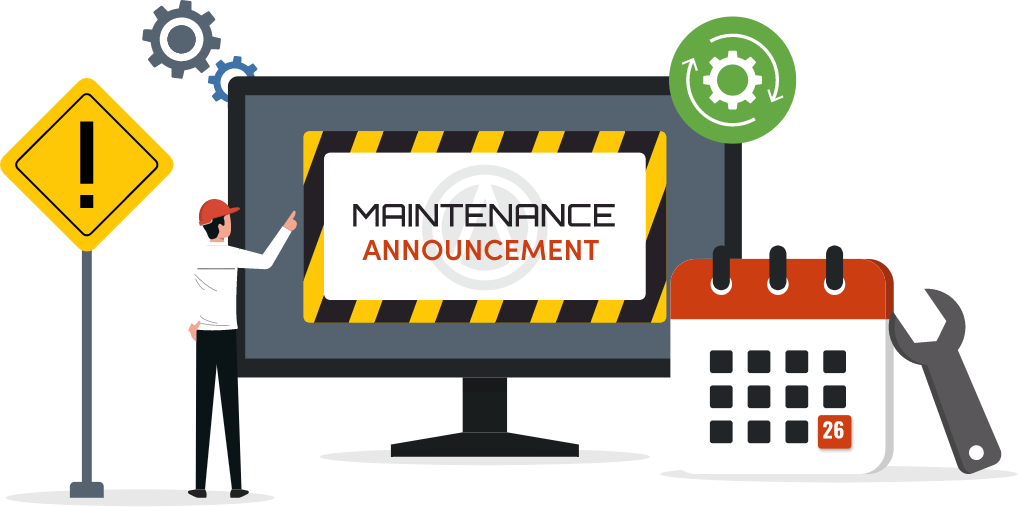What is an accounts payable automation?
Accounts payable automation is the use of digital tools to streamline invoice processing, approvals, and payments. It reduces manual tasks, minimizes errors, improves cash flow visibility, and saves time - making vendor payments more accurate, efficient, and timely for restaurant operations.
The Ultimate Guide to Accounts Payable Automation for Restaurant Owners
The Modern Restaurant Owner's Financial Burden
Running a restaurant today means wearing many hats - chef, manager, marketer, and often, bookkeeper. Amid rising food costs, staff shortages, and razor-thin margins, it's easy to overlook back-office operations like accounts payable. Yet, how you manage supplier invoices, vendor payments, and approval workflows can quietly impact your cash flow, vendor relationships, and overall efficiency.
For many restaurant owners, accounts payable (AP) is still a manual, paper-heavy process prone to errors, delays, and stress. Lost invoices, missed due dates, and time-consuming reconciliations aren't just frustrating - they're expensive.
This is where accounts payable automation comes in. More than just a buzzword, AP automation refers to digitizing and streamlining how bills are received, approved, and paid. It can transform a labor-intensive process into a fast, accurate, and transparent system that saves both time and money.
Understanding Accounts Payable

Accounts payable (AP) plays a critical role in the financial health of any restaurant. It covers the process of receiving, verifying, approving, and paying invoices for goods and services. In the fast-paced world of food-service, this function often becomes a source of stress and inefficiency. Below are the key challenges restaurant owners typically face with traditional AP processes -
1. Manual, Paper-Based Workflows
Many restaurants still rely on paper invoices, handwritten checks, and physical filing systems. This manual approach leads to lost documents, missed due dates, and slow approval cycles. It also creates a disjointed workflow that's difficult to track or scale.
2. Time-Consuming Processes
Restaurant owners and managers often spend hours each week sorting invoices, chasing approvals, writing checks, and cross-checking payment records. This is time that could be better spent on strategic tasks like staff management, menu development, or improving guest experiences.
3. High Volume and Vendor Complexity
Most restaurants deal with dozens of suppliers - each with their own invoice format, payment terms, and delivery schedules. Juggling this complexity manually increases the likelihood of errors such as over-payments, underpayments, or missed invoices.
4. Cash Flow Blind Spots
Without real-time visibility into outstanding liabilities, it's hard to forecast cash flow accurately. A delayed or forgotten invoice can lead to budgeting problems and unexpected shortfalls, especially during busy or lean seasons.
5. Fraud and Errors
Manual systems make it easier for fraudulent activity or costly mistakes to go unnoticed. Duplicate payments, incorrect amounts, or unauthorized approvals are harder to detect without proper controls in place.
Understanding these five core issues is essential. They reveal how outdated AP practices not only waste time and money but also expose restaurants to avoidable risks. Recognizing these pain points sets the stage for a smarter, more secure alternative- accounts payable automation.
Understanding Accounts Payable Automation
Accounts payable automation is the process of using digital tools to streamline and simplify how invoices are received, approved, and paid. Rather than relying on paper files, emails, or spreadsheets, automation brings everything into a centralized, digital workflow that reduces errors, saves time, and improves financial accuracy.
1. Invoice Capture
With automation, invoices are received electronically or scanned into the system. Optical character recognition (OCR) technology reads and extracts important details like vendor name, due date, and total amount. This eliminates the need for manual data entry and reduces the risk of input errors.
2. Digital Approval Workflows
Instead of chasing down managers for signatures or email confirmations, invoices are routed through a pre-set approval path. Each stakeholder is notified automatically, can approve with one click, and the process moves forward seamlessly. This ensures that no invoice sits forgotten on a desk or in an inbox.
3. Automated Payment Scheduling
Once an invoice is approved, payment can be scheduled automatically based on due dates or vendor terms. This ensures timely payments, helps restaurants take advantage of early-payment discounts, and avoids late fees.
4. Real-Time Tracking and Reporting
Every step of the process - from invoice submission to final payment - is tracked and logged. Owners and managers gain full visibility into outstanding liabilities, payment schedules, and vendor history, allowing for better cash flow forecasting and financial planning.
5. Secure Record-keeping
All invoice and payment data is stored in a centralized system, making it easier to audit transactions, resolve discrepancies, and comply with recordkeeping requirements.
Accounts payable automation doesn't mean losing control - it means gaining control with less manual effort. It empowers restaurant owners to manage their finances more efficiently, accurately, and securely - so they can focus on running a great business.
Why Restaurant Owners Should Care About AP Automation
Restaurant owners are constantly pulled in different directions - staffing, inventory, guest service, compliance, and more. With so many responsibilities, it's tempting to treat accounts payable as just another back-office task. But ignoring inefficiencies in this area can quietly eat away at your bottom line. Here's why AP automation deserves your attention -
1. Significant Time Savings
Manual invoice processing can take 10-15 minutes per invoice. Multiply that by hundreds of invoices each month, and you're looking at a major time sink. Automation reduces this to seconds, freeing up 20-30 hours per month for more strategic tasks.
2. Lower Risk of Costly Errors
Human errors - like entering the wrong amount, paying the same invoice twice, or missing a due date - can be expensive. AP automation dramatically reduces these risks by enforcing consistent workflows and removing the need for manual entry.
3. Improved Cash Flow Visibility
With a digital system, you can instantly see what's due, when it's due, and how much you owe. This level of visibility helps you plan spending, avoid last-minute cash crunches, and make smarter financial decisions.
4. Better Vendor Relationships
Late or inconsistent payments can strain relationships with suppliers. AP automation helps ensure payments go out on time, every time - strengthening trust and potentially opening the door to better terms or pricing.
5. Increased Internal Efficiency and Morale
Staff responsible for invoice processing often feel bogged down by repetitive tasks and paperwork. Automating the process lightens the workload, reduces burnout, and allows them to contribute to more meaningful operational areas.
In an industry defined by tight margins and unpredictability, small improvements in back-office efficiency can have a big impact. AP automation isn't just about technology - it's about creating a more controlled, cost-effective, and scalable way to run your business.
How the AP Automation Process Works

Understanding how accounts payable automation works can help demystify the process and show how seamlessly it can integrate into a restaurant's day-to-day operations. Below is a step-by-step breakdown of what a typical automated AP workflow looks like, tailored specifically for restaurant owners -
1. Invoice Receipt and Capture
Invoices from vendors - whether emailed, uploaded, or scanned - are automatically captured by the system. OCR (Optical Character Recognition) technology reads and digitizes key data like invoice number, vendor name, amount due, and due date. No more manual data entry or misplaced paper invoices.
2. Invoice Matching and Verification
The system checks each invoice against existing purchase orders or delivery receipts to ensure accuracy. For example, if you ordered 10 cases of produce and received 8, the system can flag the discrepancy before payment is approved.
3. Approval Routing
Once verified, the invoice is automatically routed to the appropriate person for approval - such as the kitchen manager for food deliveries or the GM for services. Rules can be set based on amount thresholds, vendor type, or department, ensuring that the right people are involved without unnecessary delays.
4. Payment Scheduling
Upon approval, the invoice is queued for payment based on its due date or any early payment incentives. Payments can be scheduled for automatic release via check, ACH, or other methods, reducing the chance of late fees and helping you maintain good vendor relationships.
5. Final Payment and Record-keeping
Once payment is completed, the system updates your records automatically. Each transaction is logged with time stamps, approval trails, and digital receipts, making audits and month-end closeouts far easier and more accurate.
6. Real-Time Dashboards and Reporting
At any time, you can log in to view the status of invoices, pending approvals, upcoming payments, or total outstanding payables. This level of transparency gives you the control needed to manage cash flow with confidence.
By automating each of these steps, restaurants can drastically reduce administrative overhead while gaining greater accuracy, speed, and control over their financial obligations.
Key Metrics That Improve With AP Automation
Accounts payable automation isn't just about convenience - it delivers measurable results that directly impact a restaurant's financial performance and operational efficiency. By replacing manual processes with automation, restaurant owners can expect significant improvements across several key metrics -
1. Invoice Processing Time
Manual invoice processing can take up to 10 days or more, especially when approval chains are slow or documents go missing. With automation, this timeline can shrink to just 2-3 days, allowing invoices to move swiftly from receipt to payment without bottlenecks.
2. Error Rate
Manual entry and paper processes are prone to mistakes - whether it's a wrong invoice amount, duplicate payment, or misfiled document. Automation reduces the error rate by up to 90%, thanks to data extraction, system alerts, and built-in validation checks.
3. Cost Per Invoice
According to industry benchmarks, the average cost to process an invoice manually ranges from $12 to $20. Automation can reduce this to under $5 per invoice, delivering direct savings in labor, materials, and administrative overhead.
4. Late Payment Incidents
Restaurants often pay late due to misrouted approvals or forgotten invoices. Automation ensures that due dates are tracked and payments are scheduled automatically, leading to fewer late payments and improved relationships with vendors.
5. Approval Cycle Time
Paper-based approvals can take days or weeks depending on staff availability. Automated workflows cut this down significantly - often to hours - since approvers are notified instantly and can approve invoices from any device.
6. Visibility and Control
With automation, you gain real-time insights into outstanding payables, cash requirements, and vendor balances. This level of visibility helps with more accurate budgeting, forecasting, and cash flow planning.
By tracking and improving these metrics, restaurant owners can not only reduce costs but also run a more agile, resilient operation. The data speaks clearly- AP automation isn't just a smart move - it's a performance upgrade.
Common Misconceptions
Despite its clear benefits, many restaurant owners hesitate to adopt accounts payable automation due to common misconceptions. Addressing these concerns can help you make a more informed decision and feel confident about the transition.
1. "AP Automation Is Only for Large Chains"
Many believe automation is too complex or expensive for small or independent restaurants. In reality, scalable solutions exist to fit different business sizes and budgets. Automation adapts to your volume and needs - whether you process dozens or hundreds of invoices monthly.
2. "We'll Lose Control Over Our Finances"
Some worry automation means handing over financial control to software. On the contrary, automation increases control by providing better visibility, enforcing approval workflows, and creating transparent audit trails. It empowers owners with timely data and reduces the risk of oversight.
3. "It's Too Difficult to Implement"
Change can be intimidating, especially in a busy restaurant environment. However, modern AP automation tools are designed for ease of use and quick integration with existing processes. Most restaurants can implement automation with minimal disruption and training.
4. "Automation Will Replace Our Staff"
Automation is not about replacing people but freeing them from repetitive tasks. By automating routine invoice processing, your team can focus on higher-value activities like vendor negotiations, cost management, or improving guest experiences.
5. "It's Just an Added Expense"
While there is an upfront cost to automation, the time savings, error reduction, and improved cash flow quickly offset the investment. When you consider how much manual processing costs in labor and mistakes, automation often pays for itself in months.
Understanding these myths helps clear the path for a smoother adoption of AP automation. It's not a scary technology - it's a practical, proven way to make your restaurant's financial operations more efficient and reliable.
Making the Shift Toward Smarter Operations
In the competitive restaurant industry, every minute and every dollar counts. Accounts payable automation isn't just a tech upgrade - it's a strategic move that helps you regain control over your finances, reduce costly errors, and improve operational efficiency. By streamlining your invoice processing, approvals, and payments, you free up valuable time to focus on what matters most - delivering great food and experiences to your guests.
Embracing automation also prepares your restaurant for growth and resilience in an ever-changing market. With better cash flow visibility and stronger vendor relationships, you can make smarter decisions and operate with confidence, even during busy or unpredictable periods.
If you're ready to take the next step, consider evaluating your current accounts payable process and identifying where automation can bring the most value. Remember, transitioning doesn't mean losing control - it means gaining clarity and freeing up your team to focus on high-impact tasks.
For restaurant owners looking to simplify financial operations, Altametrics offers a powerful accounting solution designed specifically for the foodservice industry. Altametrics streamlines your bookkeeping and accounting workflows, helping you automate key processes like accounts payable so you can save time, reduce errors, and improve financial visibility.
Start your journey toward smarter, more efficient financial management today - and take one step closer to running a healthier, more profitable restaurant.









































































































































































































































































